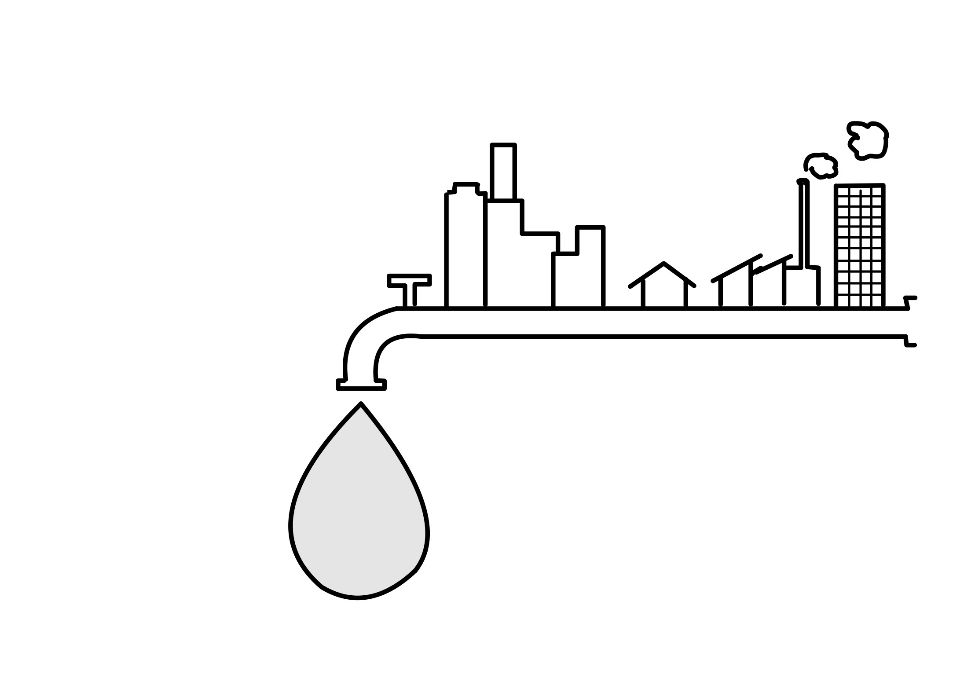Every individual needs water for survival. In the water supply scheme, we consider different usages of water like domestic use, industrial use, commercial use, water for losses and thefts, etc. Water demand is defined as the volume of water requested by the public for all the above activities. And the rise in population leads to a demand for more water. To understand this concept, let’s discuss all this concept in detail.

Water demand and its relation with population growth
Population growth leads to high water demand. And also population growth limits the amount of water available per person. Some factors affect the daily per capita consumption. When per-capita demand is multiple by the total population, it gives the total quantity of water. Population growth is directly proportional to water demand.
- Per-capita water demand: It is the annual average water consumption by one person
- Water demand: The volume of water the public needs for different use.
Population forecasting method
The present population of a city finds out by census. Generally, conducted at an interval of 10 years. There are some factors like Birth rate, Death, and Migration affecting population growth.
Various methods are available to estimate the future population.
- Arithmetic increase method: As compared to other methods it gives the lowest value. It can use for old cities. Here growth rates assume to be constant.
- Geometrical increase Method: For young and developing towns we can use this method. The population growth rate is proportional to the present population. compare to other methods this method gives the highest population. The percentage increase in population assumes to be constant in this method.
- Incremental increase method: We use this method under normal conditions for an average-sized city. It is a combination of the above two methods. So predicted population lies between the above two predicted methods population. Here the growth rate is not constant.
- Decreasing rate of growth method: This method adopts for a town that is reaching its saturation population. The rate of population growth is in reducing rate.
- Graphical Method: The time vs Population graph plot using previously known population. This graph extends to find the future population. Less accurate method.
- Comparative Graphical method: For this method, we select a similar type of city. Then we plot the graph according to the town we select.
- Master plan method and Zoning method: In this method, the master plan prepares for the development of cities in 30 to 40 years. The population density fix for the city.
Logistic curve method: We can use this method under normal conditions.
Overpopulation impact on water demand
Population in this world increases day by day. Due to the increase in population, their need also increased. And its effect is more in urban areas. Water pollution limits the sources of water supply. From that limited sources, water withdraws for the water-supply scheme. And treatment of water is also required before supplying the water to the public. Various factors are considered at the time of designing a water supply scheme design period, Different treatment units size, And all these factors are directly affected by the population of a city.
Population density
Population density is a measurement of population per unit land area. The population living within a specific location demands more water. More population means higher demand for domestic, industrial, agricultural, and municipal needs and also more water needs for sanitation. As the source is limited to a particular area it limits the amount of water available per person. Wastewater is also generated in urban areas at a high rate. Ultimately it increases the cost of the Water supply and sanitary system.
How to minimize its impact on water demand
The population should be forecast before designing the water supply scheme. The design period of the different units is also important because of the life span. Recycling wastewater after its treatment also helps in minimizing its effect.
- Population forecast: There are various methods available for forecasting water demand but it is important to select the correct method is very important.
- Wastewater treatment: Treating the wastewater and reusing is an alternate method to solve the water scarcity problem
💡 More population means more water demand.
Conclusions
Water demands depend upon the number of people in an area. More number of the person means more water requirement is on a high rate for their livelihood. So the quantity of water needed is more. To find out this thing we have to know some basic things like
You have learned the following key points in this post:
- Water demand: Volume of water requested by the users to satisfy their needs
- Per-capita water demand: In India, it is $135$ to $200$ lpcd.
- Population forecast: Estimated population for a specific design period.

Android Apps
⭐️ ⭐️ ⭐️ ⭐️ ⭐️ 1000+ | 400,000 + Downloads (Cumulative)
At eigenplus, our goal is to teach civil engineering students about structural analysis and design starting from the fundamental principles. We do this with the help of interactive android applications and accompanying web articles and videos.
Our apps have helped more than 400 thousand students across the world to understand and learn the concepts of structural engineering. Check out our apps on the google play store.
This article was crafted by a group of experts at eigenplus to ensure it adheres to our strict quality standards. The individuals who contributed to this article are:
Author

Suprabha Panda
M.Tech
She is an assistant professor with masters in Environmental Engineering.

